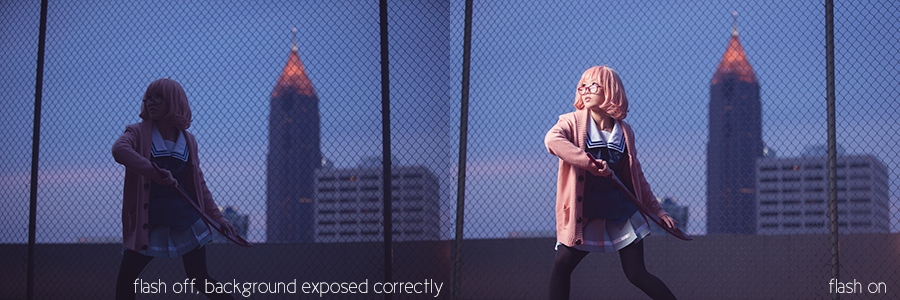

But in order to simplify this exercise, you can use the hot shoe flash mounted on you camera.

On-camera hot shoe flash use is not recommended as it produces harsh, flat lighting. You can experiment with off-camera flash if you do not have remote triggering capability, using an off-camera remote flash cord ( for Canon, or Nikon). Test exposure using ambient light only Next set the flash exposure for the primary subject The camera is set on aperture priority and evaluative metering mode. In the first image, below, the flash is set to ETTL (electronic through the lens meter system).
Balancing flash and ambient light iso#
Keep the aperture value at f/4 and the ISO at 400 for each scenario. The pop-up flash is not suitable for this exercise. Two examples of how in-camera metering systems failĬhoose a camera capable of using a hot shoe or off-camera flash to follow along. The camera’s meter when set to evaluative (Canon), matrix (Nikon), centre-weighted, or spot metering works great for a balanced scene, but not when the exposure of the environment is vastly different than the exposure of the flash lit subject. The camera’s metering system is not capable of evaluating the two light sources and establish the correct exposure for the scene, or in other words, balancing flash and ambient light. The same concept applies to photographing subjects in low light situations outdoors. In these situations, you must be in a position to balance the ambient light that is in the room ,and the light from the flash that will light your subject. However, the onboard system will usually fail when you are trying to properly expose a subject in a dimly lit room. Ones that look natural, without the harsh appearance of flash, and without detracting from the ambient light.įor the most part, your camera’s meter and exposure evaluation will be just fine when you are capturing images in even light situations. With an understanding of exposure and flash techniques you can learn to successfully balance ambient and flash exposures to create exceptional photographs. All you have is the ambient light and your speedlight. How often have you struggled trying to capture a well-exposed portrait in a dimly lit room or hall. Why is an incident meter important for flash photography?


 0 kommentar(er)
0 kommentar(er)
